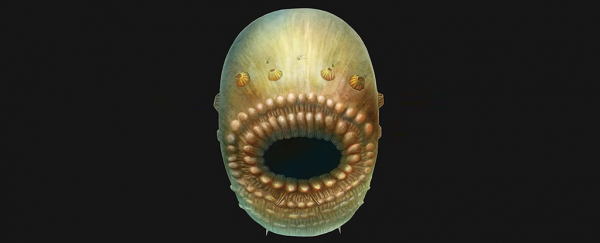Palaeontologists have added another snapshot to our ancestral family album with the discovery of one of the oldest fossils that can be linked to human ancestry.
The researchers analysed 45 fossils roughly the size and shape of a grain of rice found in sedimentary rock from China's Shaanxi province, and determined that they belonged to an as-yet-undescribed species of animal that's distantly related to humans.
Its new name, Saccorhytus coronarius, refers to its sack-like body and crown-like mouth.
It's thought that this tiny ancestor to all vertebrates settled itself between the sand grains of an ancient seabed back in the early Cambrian period - about 540 million years ago.
Its discovery helps fill a piece of the puzzle in the evolution of a category of organisms called deuterostomes, to which we humans belong, along with starfish, sea-cucumbers, and acorn worms.
This superphylum of animals includes the groups like chordata (backboned animals), echinodermata (spiky skinned animals, such as sea urchins), and hemichordata (a category of worm-like animals), and is distinguished by the way it divides itself as an embryonic ball of cells.
During the Cambrian period, primitive deuterostomes rapidly diversified into a large number of varied groups.
Evidence of these descendants can be found in rocks dating back about half a billion years ago, yet massive differences between the groups, together with their rapid divergence, has made it difficult to imagine what earlier deuterostomes might have looked like.
Using genetic differences in modern deuterostomes as a kind of 'molecular clock', biologists have a good estimate of when this group of organisms split up. Yet the fossil record has been rather blank, leading many to speculate that these distant ancestors were simply too tiny to fossilise easily.
With this discovery, palaeontologists now have a much clearer impression of this ancestor's appearance. And they were indeed small.
In some ways, the symmetrical, millimetre long fossils resemble tiny masks. A hole in the middle represents the animal's gaping mouth, surrounded by wrinkles that might have allowed it to stretch itself around relatively large prey.
Its folds and crinkles imply it was covered with thin skin and muscles, allowing it to squirm in and out of the sediment.
Other features resembling eyes and nostrils were possibly vents that expelled water and waste, since - rather unusually for a deuterostome - there is no clear indication the animal had an anus.
The researchers suggested these openings could represent the pre-cursors to pharyngeal slits, which became gills in fish, and ultimately form the origins of our ears.
Team researcher Simon Conway Morris from University of Cambridge, explained:
"We think that as an early deuterostome this may represent the primitive beginnings of a very diverse range of species, including ourselves. To the naked eye, the fossils we studied look like tiny black grains, but under the microscope the level of detail is jaw-dropping. All deuterostomes had a common ancestor, and we think that is what we are looking at here."
It's unlikely we can trace a line of ancestry directly to Saccorhytus coronarius, making this tiny critter more like a great aunt than a distant grandmother.
But knowing we might have to look for tiny sand-dwellers to understand our far distant ancestry opens a new avenue of discovery, and we can't wait to see where it leads.
The research was published in Nature.
